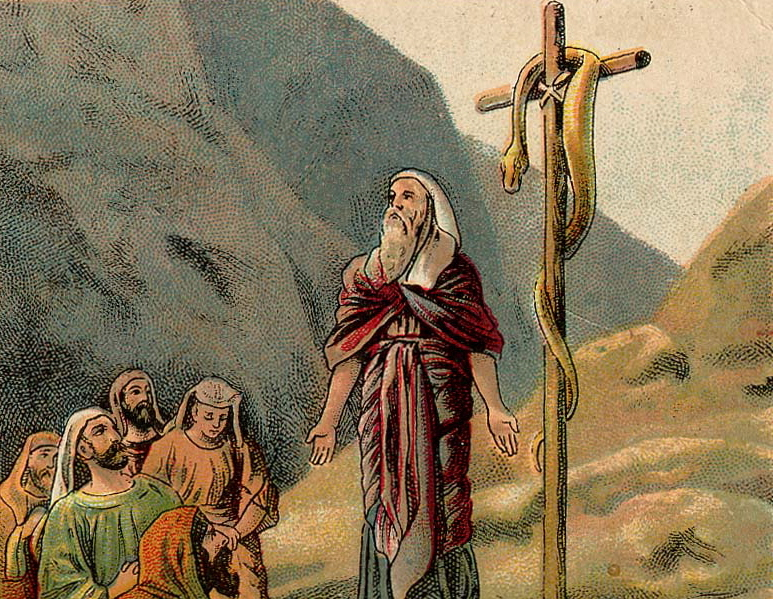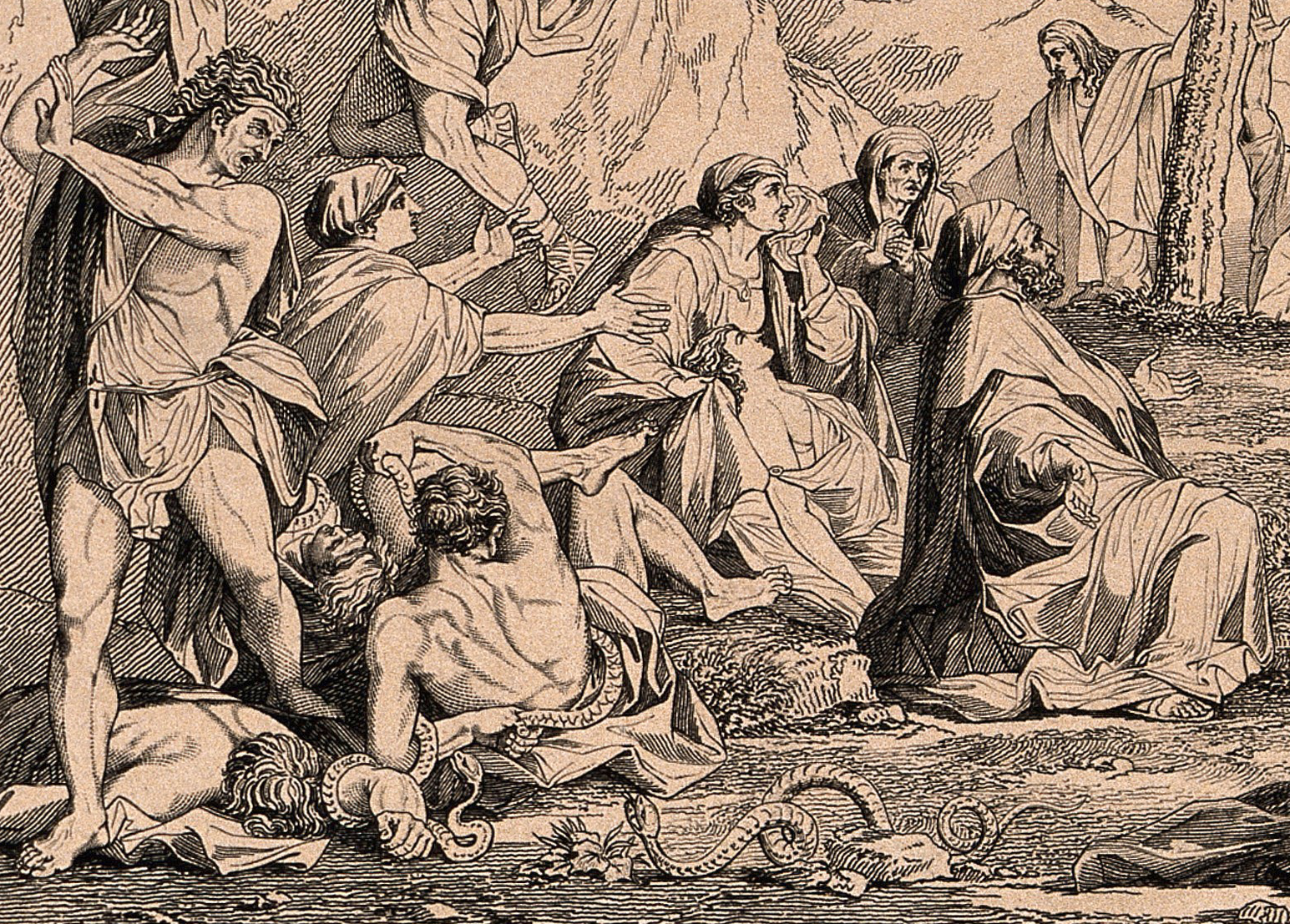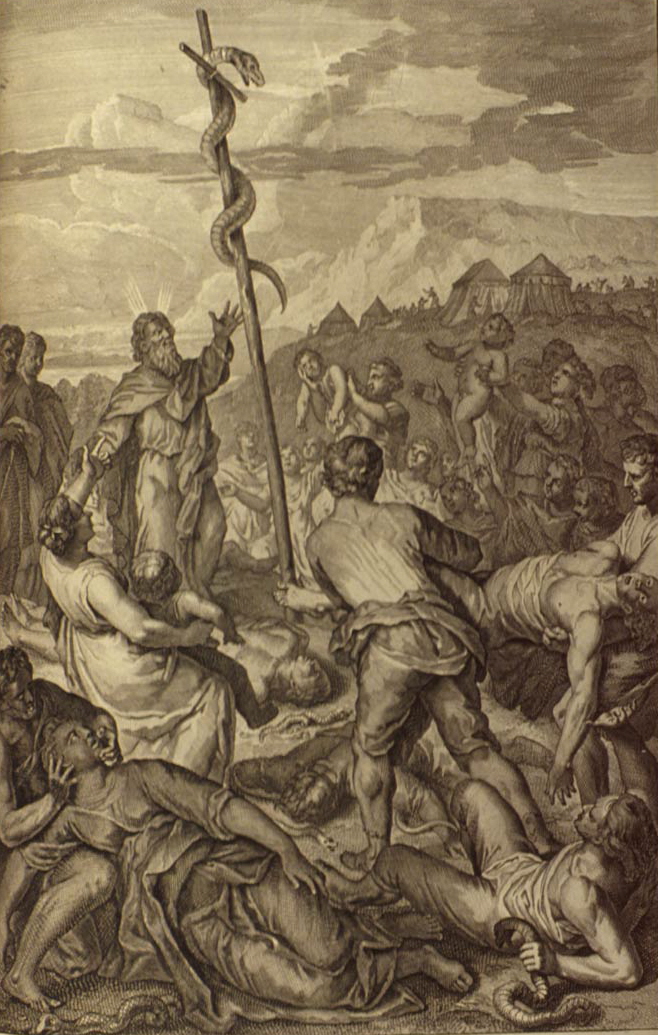

Jesus speaks of a serpent being lifted up in the wilderness, and how, by believing in Him, one can have eternal life.
“And as Moses lifted up the serpent in the wilderness, even so must the Son of man be lifted up: That whosoever believeth in him should not perish, but have eternal life” .
John 3:14,15
Out of all the things that Jesus could choose to speak about, why did He choose a snake and eternity?
You Must be Born Again
To better understand this, we need to look at the context surrounding Jesus’ statement. Nicodemus, a Pharisee (a religious leader who spent his entire life keeping the law of God given in the first five books of the Old Testament), had slipped out one night to confer privately with Jesus. In the course of their conversation, Jesus stated that, to see or understand and be part of the kingdom of God, you must be born again. Nicodemus had much trouble understanding this concept.
All he could see was the idea of a physical birth, but Jesus was trying to get him to grasp that this new birth is of a spiritual nature. Flesh, blood and bones are not made new, but it is our spirit, the intangible area within us, that He considered to be our true self.

Another reason Nicodemus had great difficulty comprehending this idea was that the Pharisees considered themselves the perfect example of obedience to the law of God. They spent their whole life trying to keep all aspects of it. Therefore, Nicodemus felt that he should already have qualified for access to God’s kingdom. That is why Jesus politely rebuked him, saying “Art thou a master of Israel, and knowest not these things?” (John 3:10). In other words, Jesus was saying, ‘You, of all people, and with all of your background, should know exactly what I’m talking about!’
Rebellion Against God
Then Jesus mentioned the serpent (snake) being lifted up in the wilderness. He was referring to the period when the children of Israel had been led out of captivity and bondage to the Egyptians. “And the Lord said unto Moses, Make thee a fiery serpent, and set it upon a pole: and it shall come to pass, that every one that is bitten, when he looketh upon it, shall live” (Numbers 21:8).
Even though God, through Moses, brought the Israelites out of Egypt and their idolatrous ways, their sinfulness and rebellion they had in Egypt was not removed from them. They regularly doubted and rebelled against God, taking Him and His love for them for granted.

“And they journeyed from mount Hor by the way of the Red sea, to [go around] the land of Edom: and the soul of the people was much discouraged because of the way. And the people [spoke] against God, and against Moses, Wherefore have ye brought us up out of Egypt to die in the wilderness? for there is no bread, neither is there any water; and our soul [despises] this light bread. And the Lord sent fiery serpents among the people, and they bit the people; and much people of Israel died.”
Numbers 21:4-6
God had already miraculously fed the people manna or ‘Angel’s food,’ and they complained! He also caused water to come forth out of a rock, but they still complained. He delivered them from the inhabitants of the land who opposed and attacked them, and the Israelites grumbled even more.
Our Heavenly Father never wants to judge and punish His creation. We are the ones who cause His wrath to come upon us, through our disobedience to His word.
Then, after yet another victory by God Himself over their enemy, the Canaanites, they grew discouraged and spoke against Him and Moses. This time they protested that they had neither water nor food, except for the miraculous manna, which they now hated. They did not want to trust in God. They preferred to have immediate gratification of their carnal appetites.
This was the final straw, so to speak, for God. “And the Lord sent fiery serpents among the people, and they bit the people; and much people of Israel died” (Numbers 21:6). The people took God for granted and then they experienced His judgment.
Pleading for Mercy
As a result, the Israelites cried out to God through Moses for mercy and forgiveness. They admitted they had sinned against Him and begged Him to take the serpents away. God heard their plea for mercy and, in return, He made a way to end the judgment that was upon them—but only if they would obey Him.
Our Heavenly Father never wants to judge and punish His creation. We are the ones who cause His wrath to come upon us, through our disobedience to His word. Therefore, God is always ready to forgive us, if we will acknowledge our wrongdoing, seek Him for forgiveness and repent of and forsake our sin.

A Curse for All Humanity
God told Moses to make a metal (bronze) replica of the snakes that were fatally biting the Israelites who had complained and sinned against God. He was then to take this sculpture and raise it up on a pole, so that whoever was afflicted by the snakes and looked upon it would live.
To answer the question of why God used a serpent and not something else we need to go back to the book of Genesis.
“And the Lord God said unto the serpent, Because thou hast done this, thou art cursed above all cattle, and above every beast of the field; upon thy belly shalt thou go, and dust shalt thou eat all the days of thy life.”
Genesis 3:14
God had placed a curse upon the serpent because it had deceived Eve into eating from the forbidden Tree of the Knowledge of Good and Evil in the Garden of Eden.
“And if a man have committed a sin worthy of death, and he be to be put to death, and thou hang him on a tree: His body shall not remain all night upon the tree, but thou shalt in any wise bury him that day; (for he that is hanged is accursed of God…).”
Deuteronomy 21:22-23 (emphasis added)
Here we see this act of taking something that is cursed and raising it up on a pole before the Israelites as symbolizing Jesus Christ and His sacrifice on the cross. This is what Jesus was referring to earlier when He said, “…even so must the Son of man be lifted up: That whosoever believeth in him should not perish, but have eternal life” (John 3:14-15).
Sin brings death to one’s relationship with God, ultimately resulting in an eternity in hell with the devil and the fallen angels.
Jesus did not commit any sin Himself, yet He took on Himself all of the sins of the world. He, like the cursed snake, was raised up on a cross—and thereby became a curse for all humanity.
And the result of our sin is like the bite of the serpents—we are bitten by it and we die. Sin brings death to one’s relationship with God, ultimately resulting in an eternity in hell with the devil and the fallen angels.

Our Only Cure
Our only remedy is to look at the One who was raised up for all to see—Jesus Christ. “And I, if I be lifted up from the earth, will draw all men unto me” (John 12:32,33). When the Israelites saw death spreading throughout the camp, they “…came to Moses, and said, We have sinned, for we have spoken against the Lord, and against thee; pray unto the Lord, that he take away the serpents from us…” (Numbers 21:7). What happened next?
“…Moses made a serpent of brass, and put it upon a pole, and it came to pass, that if a serpent had bitten any man, when he beheld the serpent of brass, he lived.”
Numbers 21:9
When we acknowledge that we have sinned before God, and then look on and believe in the sacrifice of Christ raised up on the Cross, we will live as well.
The glorious difference is, that while the Israelites were kept from an immediate physical death, we are delivered spiritually and are given the means to live for eternity with Christ Himself!
[Image credits: Featured Image (when applicable) Providence Lithograph Co./public domain; John Bergman/pixabay; Griszka Niewiadomski/freeimages; Wellcome Collection (CC-BY-4.0) (cropped); Gerard Hoet/public domain; Clker-Free-Vector-Images/pixabay]

